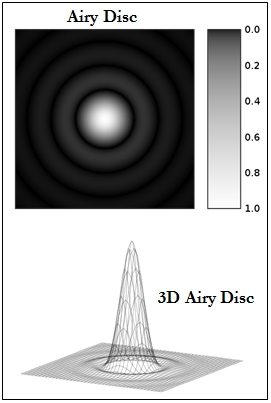Exo-planet Imaging

When imaging a star through a telescope, a nearby planet will be much fainter than the star, and is therefore very hard to detect. At visible wavelengths an exo-planet image will be typically 10^-9 to 10^-10 times as bright as its host star and in the thermal infra-red the planet will be approximately 10^-6 times as bright as the star. This large dynamic range leads to requirements that can hardly be met by today's techniques.
Coronography is a technique used to supress the light from the star, and thereby improve the chances of detecting fainter orbiting planets. Current coronograph designs for space missions concentrate on image-plane masks of pure phase or pure amplitude type or on pupil apodisation. These approaches aim to facilitate the efficient removal of the star flux on an image plane mask and/or on a pupil-plane mask (e.g. a Lyot stop). However, the image of the star is not merely an on axis spot - it's an airy function with rings (or 'side lobes' - see figure opposite). Since the amount of light generated by the star is so large, there is still significant flux contained in the sidelobes of the image. The side lobe flux of the star image contaminates the images of nearby planets, making imaging, spectroscopy and photometry of such exo-planets very difficult.
Our research aims to increase the visibility/detectability of exo-planets by combining coronography with a technique we have developed called 'pupil replication'. Pupil replication is a new optical technique that decreases the diameter of the image of a star on the optical axis by replicating the input pupil of the telescope and reimaging this composed pupil onto the detector. By decreasing the diameter of the star image the coronographic suppression of the star flux becomes more efficient.
You can find out more by visiting our resources section, where the technique of pupil replication is discussed in detail.
back to top
Our Research
Find information on our current research projects, and our research interests both past and present...
Life Sciences Interface
- Introduction
- Real-time 3D imaging
- 3D Live-cell imaging
- Particle Tracking
- Sperm Motility
- Bioimage Gallery